Gas pipeline looping: its functions and features of arrangement for a gas pipeline
All gas pipelines are built taking into account the consumption of blue fuel by all available consumers. But during operation, the amount of gas used often grows and once the available capacity for its transportation becomes small.
As a result, the owners of the pipeline have to look for a way out, and one of the options could be a looping of the gas pipeline. To which today experts and other interested parties are increasingly turning.
Let's see what this process is and how to put it into practice.
The content of the article:
What is looping?
The name of the looping process comes from the English word “looping”, which in translation means “looping”. And this is the exact name of the process of the same name. Since it is laying a new section of the gas pipeline, moreover, parallel to the main line.
Such a branch is always part of an existing system and its beginning is sidebar. And where in the design there is no need to share gas flows, the loop closes.
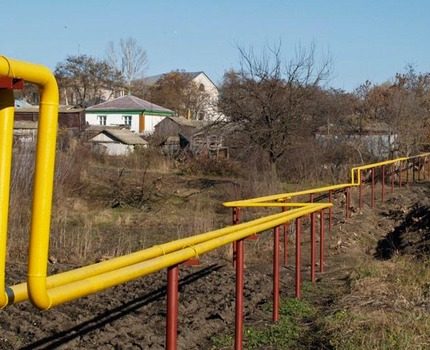
The looping of gas pipelines serves to solve two main problems, among which is an increase in the available capacity of the main line or a decrease in pressure loss during gas transportation.
First of all, this applies to high-pressure lines, since it is in them that the most unstable conditions are created, leading to a decrease in efficiency. And, consequently, to financial losses.
But pressure stabilization is possible in all other types of networks, that is, transporting gas at medium or low pressure. Since a parallel pipe helps to reduce the pressure at the beginning of the path and significantly increase it at the end.
With the help of looping, specialists are able to solve a number of problems, including the following:
- Use of an additional line during main repairs.
- The use of such an artery to change the configuration of the main. For example, while the gas will travel along a parallel branch, the position of pressure stations can be adjusted on the main one, which in the future will contribute to more efficient operation of the system.
An important advantage of this design is the ability to use it as a main line for transporting gas. This helps in the shortest possible time to get the desired result, and saving money on arranging a new gas pipeline.

This method has been known for a long time, but the peak of use is at this time. This happens because the gas system in the post-Soviet territory was formed long ago (1975-1990), and now it is being finalized and improved to meet modern needs.
From the foregoing, we can conclude that today looping is actively used for several reasons, which include:
- staged construction - initially all gas pipelines are built taking into account the existing needs, and then, as necessary, the throughput increases;
- lack of own funds or investments for the construction of new networks - this is due to a decrease in gas demand, and, accordingly, a decrease in interest in the industry of creditors, investors and even ordinary consumers.
The information indicated indicates that looping may be a cheaper option than building a full-fledged new gas pipeline.
Subtleties of arrangement and application
The design of the parallel pipeline is almost identical to the main line. In view of this, looping is allowed to be used under the same conditions as the main gas pipeline, that is, in almost any.
When is this method used?
But you should know that the presented option to increase productivity is only one of several competing methods.
Among them are distinguished such as the insertion of pipes of a larger diameter, an increase in the power of stations with pumping equipment.
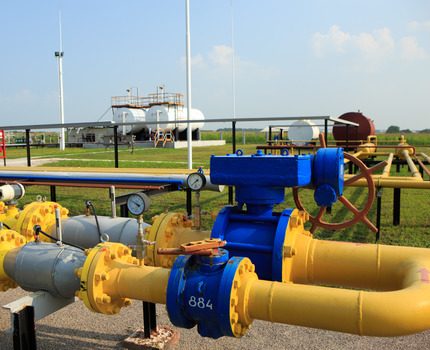
In addition, looping can be part of a combination of unloading the main line. For example, this option is to use parallel lines in conjunction with increasing the power of the pumping stations.
Guiding documents allow you to use multiple looping in one area. The diameter of the pipes can be different, but if their maximum size is not enough for transporting gas, then products of the same size are usually used in different branches, which ensures the same speed of fuel movement.
What cannot be achieved using various pipes, and this leads to the fact that certain sections of the pipeline will wear out faster. Although this information is for the most part relevant to gas pipelineswhere the pressure is always as high as possible.
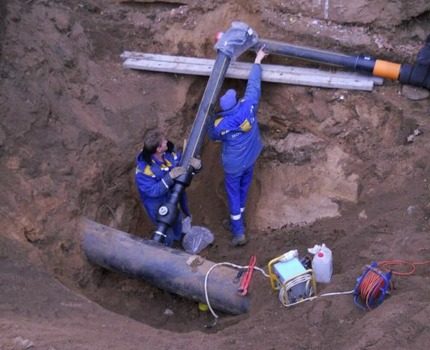
The exact diameter can only be set with special calculationson which design is carried out, based on guidance documents.
The principle of operation of the loop
After the start of the use of a parallel string of the gas pipeline, the transported volumes of fuel are reduced along the main highway.As a result, the hydraulic resistance, which must be overcome, is reduced, which leads to a significant reduction in pressure losses.
Therefore, at the same gas pressure, it is possible to transport large volumes of blue fuel.
Such an additional line will be effective at any length. But, the longer it is, the more noticeable the result will be.
When can I use looping?
As mentioned above, looping is one of the competing options for unloading a gas pipeline. Therefore, its installation requires technical justification and comparison with other methods.
That is, a parallel line can begin to be built after its effectiveness is proved in comparison with the insertion of a larger pipe, an increase in the capacity of pumping stations, or some combination option.
You also need to know that looping is mainly used for unloading gas pipelines transporting somewhere blue fuel for large consumers, which are cities, large enterprises, and others.

For households and other small consumers, this method is of little relevance, since in most cases gas is supplied in insufficient quantities not because of pipe congestion, but in the case of incorrectly performed hydraulic calculation.
Even if the system runs to the limit due to the fact that the number of consumers (gas stoves, water heaters) in the house has grown, then usually the best way out is to install larger pipes for the main line, rather than using looping.
The reasons for the irrelevance of this method for low-power pipelines are that:
- Any gas pipeline with looping will solve the problem that any part of the structures will cope with separately.
- Each parallel pipeline line can be put into operation after the approval of the same project, as in all other cases. That is, it will take as much time to create it as for the ordinary one, the costs will be similar, which also does not give a competitive advantage.
- For the construction of looping, the same materials are used as for the main line, which again does not facilitate the task.
- The aesthetic appearance of a gas pipeline with looping can be worse than usual, since several lines, more massive supports are unlikely to decorate a personal plot.
In view of all that has been said, representatives of gorgaz can easily reject a gas pipeline project with looping as unreasonable. This can happen because it will be difficult for specialists to explain why a complex line is needed to provide small consumers.

Therefore, even if such an idea arose, then in the early stages of creating the desired project, you should contact the responsible persons of your gas to carry out the coordination.
Some installation features
Since any parallel line is an ordinary gas pipeline, then all the rules and regulations for such structures apply to it. As a result, after the creation and approval of the project, the usual insertion of a new pipe into the main line takes place.
The only important feature is the need to block the existing gas pipeline from two sides. Why special shut-off valves, fittings for pressure relief and other equipment can crash.
Norms for arranging a gas pipeline
Loops are subject to the usual rules for all gas pipelines. Therefore, work can only begin after the approval of the relevant project. To have the right to produce them experts with access.
All equipment, materials that will be used for construction must be checked for the presence of appropriate certificates, absence of damage, other shortcomings.
When performing the arrangement, steel pipes are used, more precisely, their individual types, subjected to special anti-corrosion treatment, as well as their polyethylene analogues.
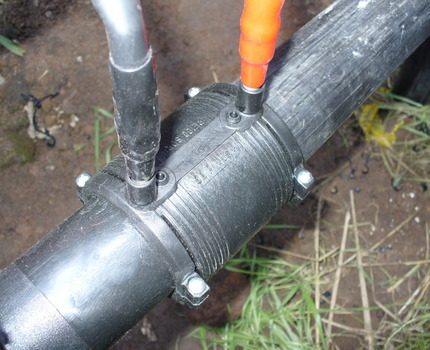
The necessary work is carried out in stages, that is, such an operation begins with the preparation of looping for assembly. For this, trenches are being digged, supports are installed, then shut-off valves are mounted on both sides, receivers are equipped, to which pipes of a parallel line are welded at the next stage.
During construction, responsible persons are obliged to control a number of important parameters, which include the fit to the bottom of the trench, the distance between the various communications - both external and related to the design of the gas pipeline itself. Welded joints as well as anti-corrosion coating are subject to special control.
After installation of the parallel line is completed, appropriate tests should be performed. Before conducting such operations, preparatory work must be completed.
For example, the trench in which the looping is mounted must be sprinkled with a layer of soil. But to completely fill it up is unnecessary, since such a procedure is performed only after successfully passing the test for suitability for use.
Gas pipeline calculations
Guiding documents allow you to calculate looping only using special formulas. Some of them will be attached below, but it can be said in advance that only specialists can make estimates.
Since a large number of different variables are used during its execution, which makes the task difficult.
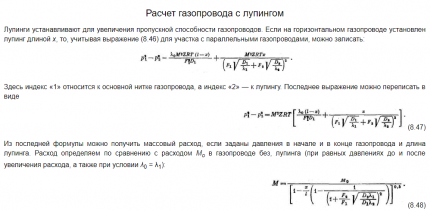
That is, a person or organization interested in developing a project and building a looping will not be able to save even on preliminary calculations.
Because unlike a number of other similar procedures, for example, hydraulic calculation, a simple and affordable computer method is not used. As a result, the designer must have a sufficient supply of specialized knowledge.

After the calculation is completed, it is recommended that you contact gorgaz to complete the agreement. If this is not done and the project is developed in full, then this can lead to significant financial losses. Since any of the many requirements of gas workers may not be complied with.
We also recommend reading our article on the design of a gas supply system. More details - go to the link.
Example of calculating a gas pipeline
To calculate the parallel line of the gas pipeline, it is necessary to know a number of initial data, including volumetric, hourly gas flow rate, gas resistance coefficient, fuel temperature and a number of other data. All the necessary information is taken from a pre-compiled scheme.
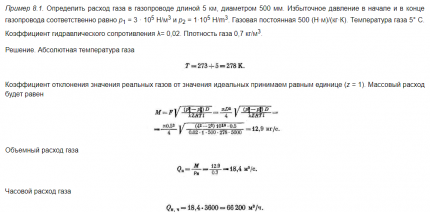
The complexity of the calculation example further indicates that specialists should be engaged in this work or errors should not be avoided. Which will lead to a loss of time, money.
For more details on how to calculate the gas pipeline system, see this stuff.
Another example of looping
One of the most famous gas pipelines with looping put into operation in recent years is the parallel line of the Pelyatka-Severo-Soleninskoye trunk pipeline. Its length is 30 km, but for the construction it was necessary to equip a considerable 160 km of road.
In addition, it was necessary to lay almost 90 km of cable. The work was carried out by more than half a thousand qualified specialists for half a year.
The arrangement consisted of the following steps:
- installation of piles, which was preceded by drilling;
- installation followed by welding of supporting structures;
- laying with welding of the looping pipes themselves;
- quality control of welded joints;
- looping sweeps;
- tests followed by launch in test mode;
- anti-corrosion treatment of all metal elements.
The steps are listed in order. As a result, the specified looping allows transporting gas to consumers at the lowest cost, and without fail.
According to experts, the economic effect of using this 30-kilometer pipe will be an impressive 6.5 billion rubles, and this is only 2 years from the moment the line was commissioned.
Conclusions and useful video on the topic
This short video allows you to better understand what a gas pipeline with looping is:
Any looping is able to relieve the main line, thereby increasing the amount of transported fuel to consumers. Moreover, without any increase in costs. At the same time, a parallel pipeline line is not a panacea for all sorts of cases.
Therefore, before developing a project, you need to make sure that this option of unloading the network is appropriate.
Still have questions about the topic of the article? Found defects or is there valuable information that you can share with visitors to our site? Please leave your comments in the block under the article.

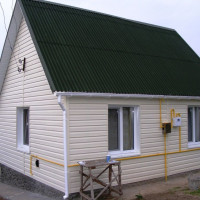 Is it possible to close a gas pipe with siding: the rules and subtleties of masking a gas pipeline
Is it possible to close a gas pipe with siding: the rules and subtleties of masking a gas pipeline 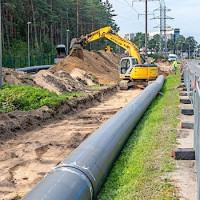 Requirements for laying a gas pipeline in settlements: depth and rules for laying an elevated and underground pipeline
Requirements for laying a gas pipeline in settlements: depth and rules for laying an elevated and underground pipeline 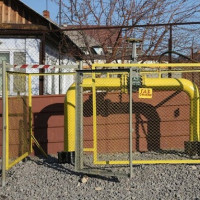 Laying a gas pipeline to a private house: methods, equipment, basic requirements
Laying a gas pipeline to a private house: methods, equipment, basic requirements 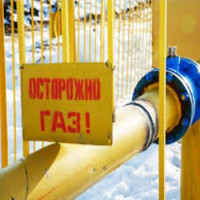 Hydraulic calculation of a gas pipeline: calculation methods and methods + calculation example
Hydraulic calculation of a gas pipeline: calculation methods and methods + calculation example  Elevated and underground gas pipelines: features of the device and gaskets
Elevated and underground gas pipelines: features of the device and gaskets 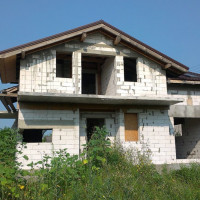 Is it possible to connect gas to an unregistered house: features of the connection and design of “unfinished”
Is it possible to connect gas to an unregistered house: features of the connection and design of “unfinished”  How much does it cost to connect gas to a private house: the price of organizing gas supply
How much does it cost to connect gas to a private house: the price of organizing gas supply  The best washing machines with dryer: model rating and customer tips
The best washing machines with dryer: model rating and customer tips  What is the color temperature of light and the nuances of choosing the temperature of the lamps to suit your needs
What is the color temperature of light and the nuances of choosing the temperature of the lamps to suit your needs  Replacement of a geyser in an apartment: replacement paperwork + basic norms and requirements
Replacement of a geyser in an apartment: replacement paperwork + basic norms and requirements